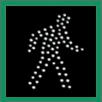New York City DOT appreciates Checkpeds participation in the study and its efforts in setting up this web log. It not only provides a valuable opportunity for concerned residents to actively participate in the Clinton/Hell’s Kitchen Neighborhood Traffic Study, but also promises to be a tremendous resource as we gather information, ideas and knowledgeable input for application in the study.
The impetus for this study was a stated need to improve pedestrian conditions, especially safety, in the Clinton/Hell’s Kitchen neighborhood and to provide some relief from the effects of Lincoln Tunnel traffic on the community. These remain the principal goals of the study, while still recognizing the need to balance those goals with citywide and regional needs. The study aims to be comprehensive, focusing on all modes of transportation, including pedestrians, cyclists, cars, trucks and transit. Consistency with PlaNYC 2030 goals, and improving neighborhood quality of life, including a pedestrian-friendly environment, are among the primary objectives of the study.
Contributors to the web log so far have been active members of the Project Advisory Committee (PAC) who have had an opportunity to review the draft Scope of Work presented at the December 4 PAC meeting. Based on the concerns expressed on the web log and at the PAC meetings, certain modifications to the Scope of Work are being prepared.
The Scope of Work has separate maps for intersections where new data will be collected and for all intersections that will be analyzed. The latter includes many more intersections, because current or recent data is already available for a large number of study area intersections. Thus, many intersections not shown on the traffic and pedestrian data collection maps will in fact be included in the analysis. Both the data collection sites and the analysis intersections are being expanded as follows:
Pedestrian counts will be added at the following nine intersections near schools in the northern part of the study area:
· 10th Avenue and West 45th Street
· 8th Avenue and West 48th Street
· 9th Avenue and West 48th Street
· 10th Avenue and West 50th Street
· 11th Avenue and West 50th Street
· 8th Avenue and West 52nd Street
· 9th Avenue and West 52nd Street
· 10th Avenue and West 52nd Street
· 10th Avenue and West 53rd Street
A pedestrian count will also be added at 10th Avenue and West 42nd Street.
Pedestrian counts collected as part of the Expanded Moynihan/Penn Station Supplemental Environmental Impact Study will be used to analyze pedestrian conditions at intersections along 8th Avenue from West 29th to West 35th Streets, and along 9th Avenue from West 31st to West 34th Streets.
Manual turning movement counts will be added at every intersection along West 50th Street from Route 9A to 8th Avenue.
Manual turning movement counts collected for other projects in the study area will be used to perform analysis of selected intersections in the northern part of the study area.
Bicycle counts will be added as part of the manual turning movement counts to be performed at the following intersections:
· 8th Avenue and West 41st Street
· 8th Avenue and West 43rd Street
· 9th Avenue and West 43rd Street
· 9th Avenue and West 44th Street
· 9th Avenue and West 45th Street
· 9th Avenue and West 50th Street
The 24-hour, 7-day Automatic Traffic Recorder (ATR) counts will be analyzed to identify any peak volumes higher than those occurring during the time periods of the manual turning movement counts.
References to “peak hours” will be changed to “peak periods” in regards to data collection.
